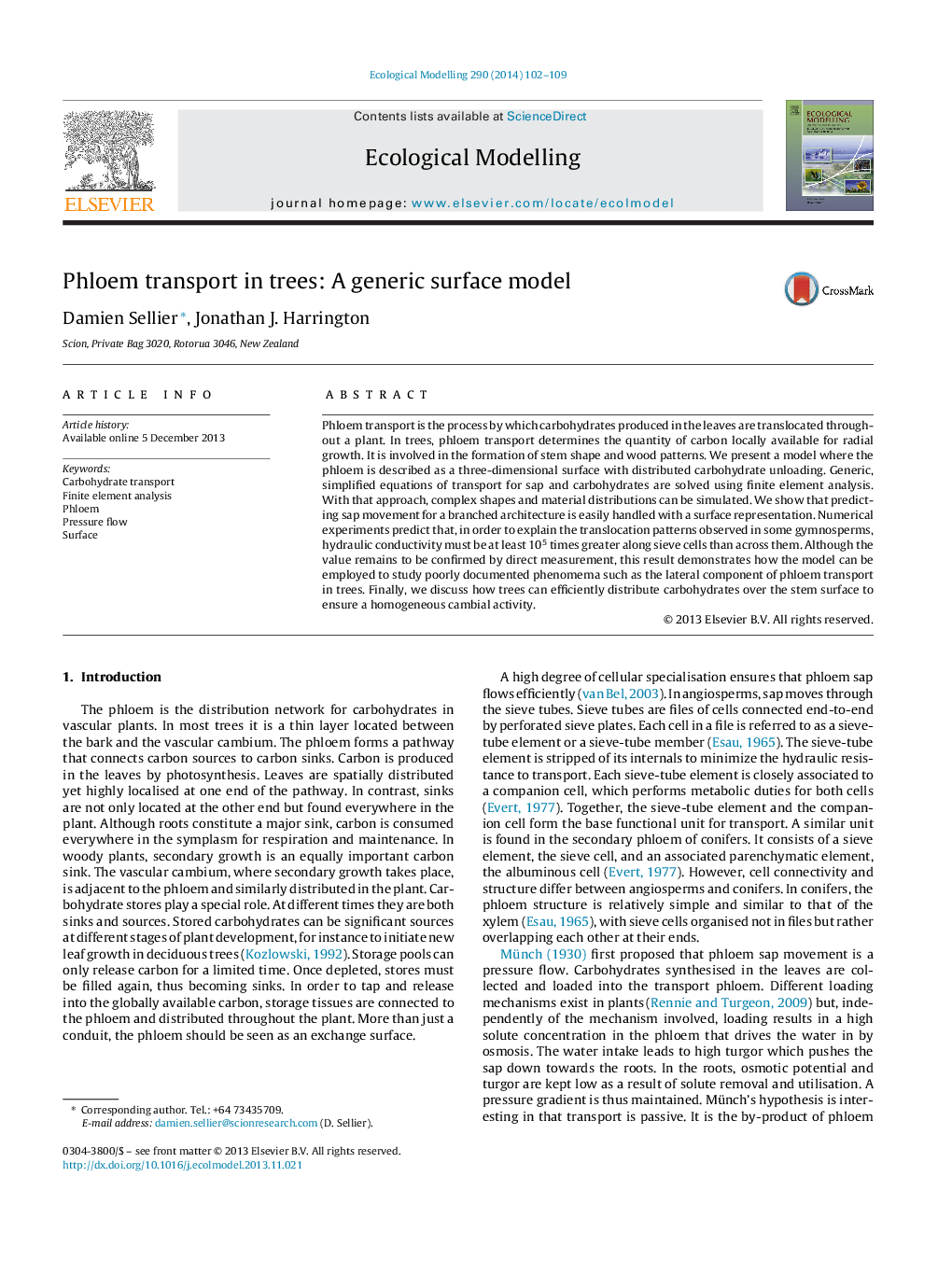| Article ID | Journal | Published Year | Pages | File Type |
|---|---|---|---|---|
| 4375847 | Ecological Modelling | 2014 | 8 Pages |
Abstract
Phloem transport is the process by which carbohydrates produced in the leaves are translocated throughout a plant. In trees, phloem transport determines the quantity of carbon locally available for radial growth. It is involved in the formation of stem shape and wood patterns. We present a model where the phloem is described as a three-dimensional surface with distributed carbohydrate unloading. Generic, simplified equations of transport for sap and carbohydrates are solved using finite element analysis. With that approach, complex shapes and material distributions can be simulated. We show that predicting sap movement for a branched architecture is easily handled with a surface representation. Numerical experiments predict that, in order to explain the translocation patterns observed in some gymnosperms, hydraulic conductivity must be at least 105 times greater along sieve cells than across them. Although the value remains to be confirmed by direct measurement, this result demonstrates how the model can be employed to study poorly documented phenomema such as the lateral component of phloem transport in trees. Finally, we discuss how trees can efficiently distribute carbohydrates over the stem surface to ensure a homogeneous cambial activity.
Related Topics
Life Sciences
Agricultural and Biological Sciences
Ecology, Evolution, Behavior and Systematics
Authors
Damien Sellier, Jonathan J. Harrington,
